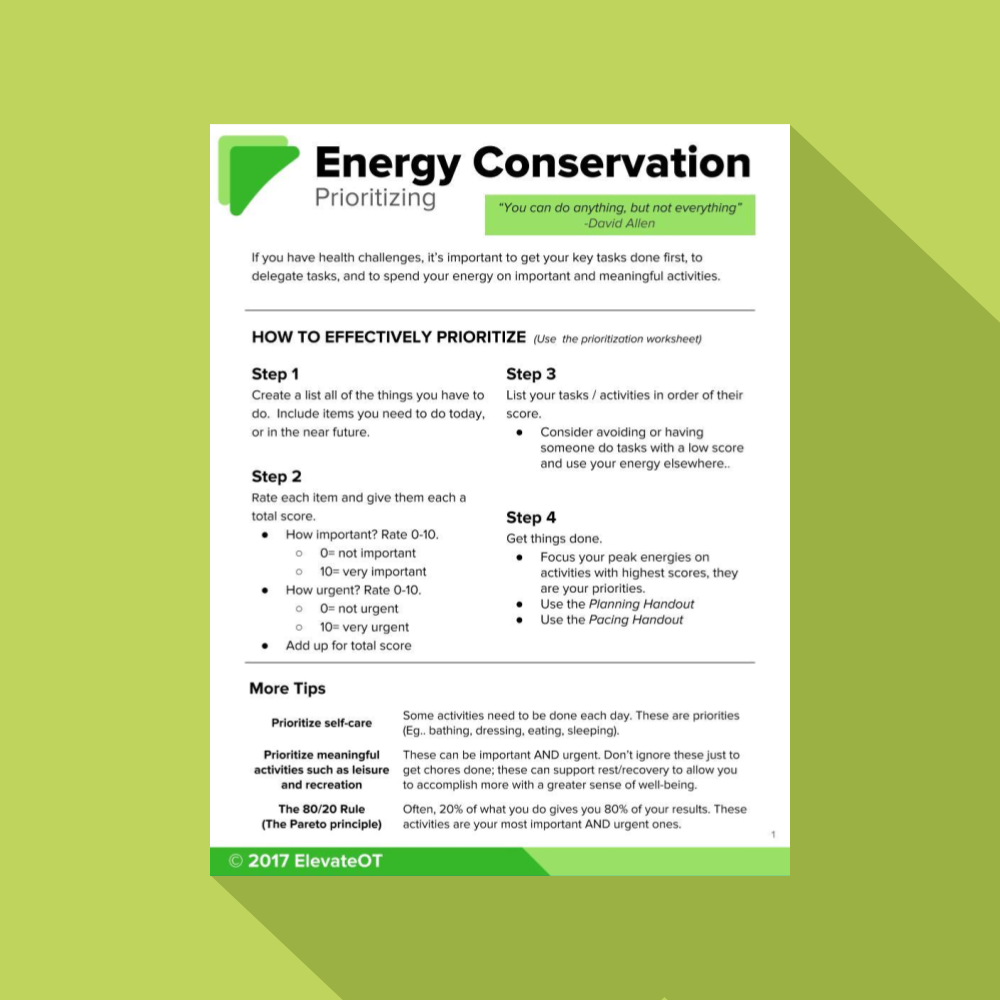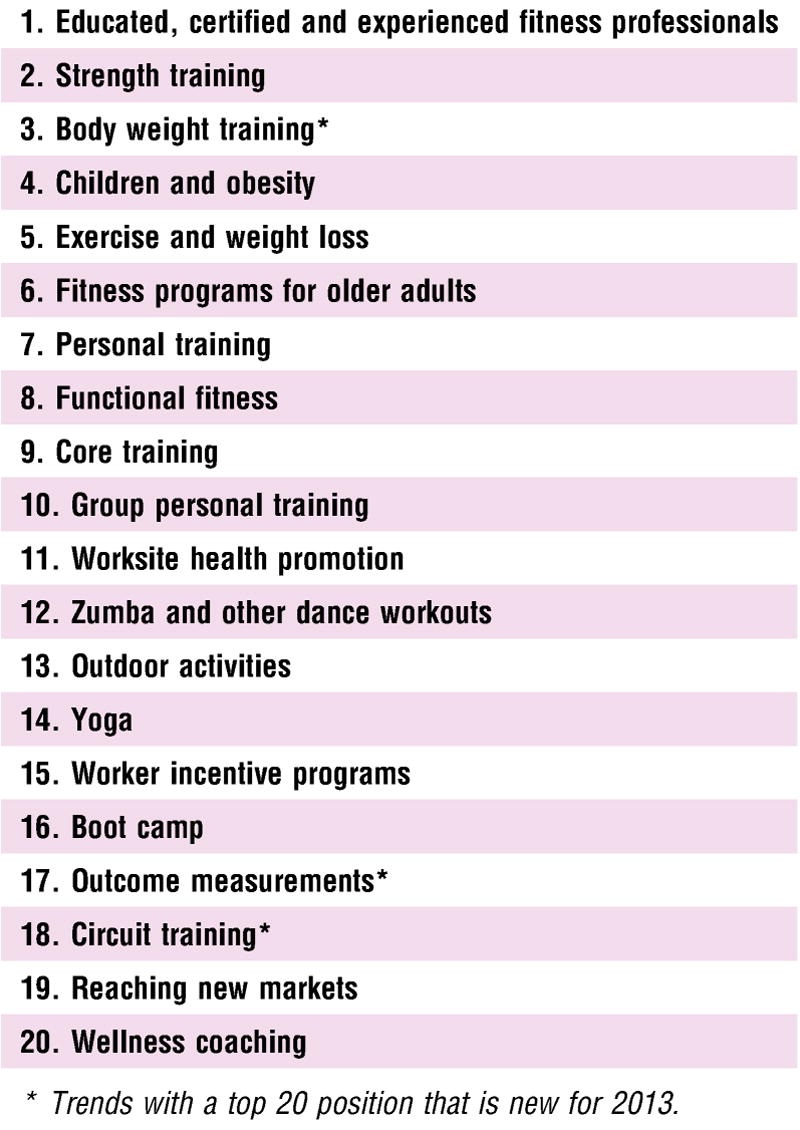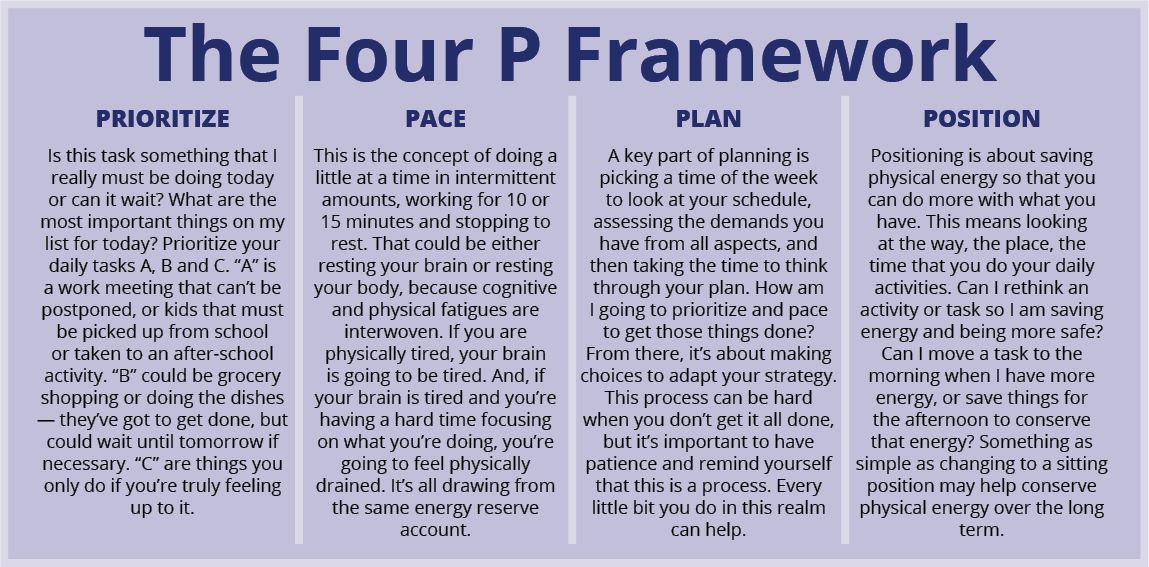
Elevate OTEnergy Conservation Pack
The signs of pain and fatigue are confirmed as indicators of energy conservation strategies, this delivery can be condensed from planning and organization, priorities, activity analysis, balance between activity and rest, outsourcing of tasks and physical/environmental adaptation. Trial Registration, OSF https://osf.io/rsyq4.

Energy Conservation Opportunities. PowerPoint Slides
Occupational Therapy. Occupational therapy is a client-centered profession frequently referred to as the "art and science of helping people do the day-to-day activities that are important and meaningful to their health and well-being through engagement in valued occupations" (Crepeau, Schell, & Cohn, 2009, p. 217).
.png)
Elevate OTEnergy Conservation Pack
Energy conservation is a means to: using your energy wisely. finding an easier way to carry out everyday tasks. geting the most activity done using the least amount of energy. giving you more energy for the activities which are important to you. Why do I need to conserve my energy?

PPT ENERGY CONSERVATION PowerPoint Presentation, free download ID1764006
The aim of energy conservation is to improve your quality of life, by conserving your energy for the activities you "like to do" as well as those you "have to do", within a safe and well structured environment. (Taken from Breathe Easy - 2008) The Six P's for more Energy Prioritise Plan Positioning Pace Yourself Positive Attitude

Energy Conservation Techniques Reddy Care Physical & Occupational Therapy Physical Therapists
Energy conservation simply means reducing the amount of energy that is required to complete an activity. It's all about fi nding a balance between rest and work in your life. This document will give you many suggestions on how to expend less energy while you are completing your daily activities. The four principles

Energy conservation techniques, Occupational therapy activities, Occupational therapy assistant
Energy conservation involves learning techniques to ensure you maintain a level of activity, help reduce fatigue and to improve activity tolerance. It is about decreasing the amount of energy needed to perform activities. To do this you may need to rethink the way in which you do things in order to improve efficiency and reduce tiredness.

OTV Episode 19 Conserving Energy Everyday YouTube
Energy Conservation What is Energy Conservation? After being in the hospital, it is normal to feel tired and weak. You may also feel short of breath and have less energy to do the activities you are used to doing at home.

Elevate OTEnergy Conservation Pack
Energy conservation Energy conservation is all about planning your daily activities and finding more efficient ways of doing them. Achieving a balance between activity and rest is a good way of managing your lifestyle so that you do not become over-tired or, alternatively, wary of any exertion or exercise. How do you conserve energy? 1.

Occupational TherapyEnergy Conservation For Post
Energy Conservation [edit | edit source] Energy conservation refers to the way activities are done to minimize muscle fatigue, joint stress, and pain. By using the body efficiently and sequentially doing things, you can save energy.. Occupational therapy for Adults with Cancer: Why it matters. Oncologist [Internet]. 2016 Feb 10;21(3):314-9.

Educating Your Patients About Energy Conservation Techniques
Energy Conservation and Your OT Patient by Cheryl Hall on October 1st, 2017 Fatigue is a hallmark symptom for many of our patients. While a simple nap or good night's sleep cannot eliminate fatigue, it is a condition that can be effectively managed.

Energy conservation occupational therapy doctorvisit
Energy conservation studies have been increasingly focusing on neurological and systemic diseases, especially regarding symptoms of fatigue and pain. The findings were arranged in six strategies whose interventions are essentially based on guidelines and setting goals for patients, client-centered approach.

Energy Conservation and Your OT Patient OT Toolkit Blog Occupational Therapy Activities
Energy conservation strategies are one of the key interventions for fatigue management in chronic diseases. We aimed to investigate the effect of applying these techniques in the fatigue management of patients with MND. Methods: This randomized controlled trial (RCT) study was carried out on 28 patients with MND.

Energy conservation occupational therapy treatment notes
In this episode we focus on the principles of energy conservation including why it's importan.more.more OT-V Episode 18: Making Life Simpler and Safer in the Kitchen 71K views 7..

Educating your patient on energy conservation and then docuementing it shows your skill
Patient training of energy conservation techniques (ECTs) might be useful to improve the tolerance and execution of these ADL, but objective studies evaluating the effect of teaching ECTs on the metabolic equivalent of task (MET) in patients with COPD are sparse. Objectives

Managing Fatigue Using Energy Conservation Strategies and Occupational Therapy Techniques to
Energy conservation techniques is a less physical way of adapting the way daily activities within the environment. Making simple adjustments to daily routines can improve energy efficiency, and ultimately conserve energy throughout the day.

Saving energy with selfcare activities Acute OT Occupational therapy activities
[Energy conservation] is the way activities are done to minimize muscle fatigue, joint stress, and pain. By using your body efficiently and doing things in a sequential way, you can save your energy, remain independent, and be less frustrated by your illness when the energy you have lasts throughout the day (2017).